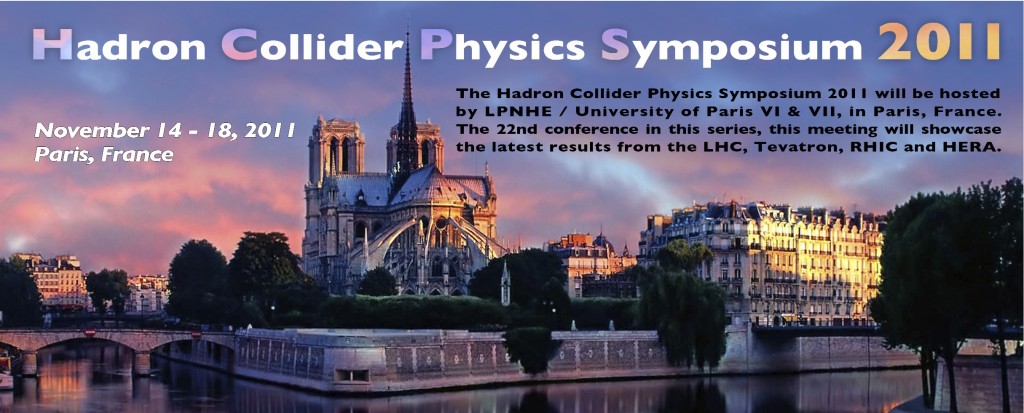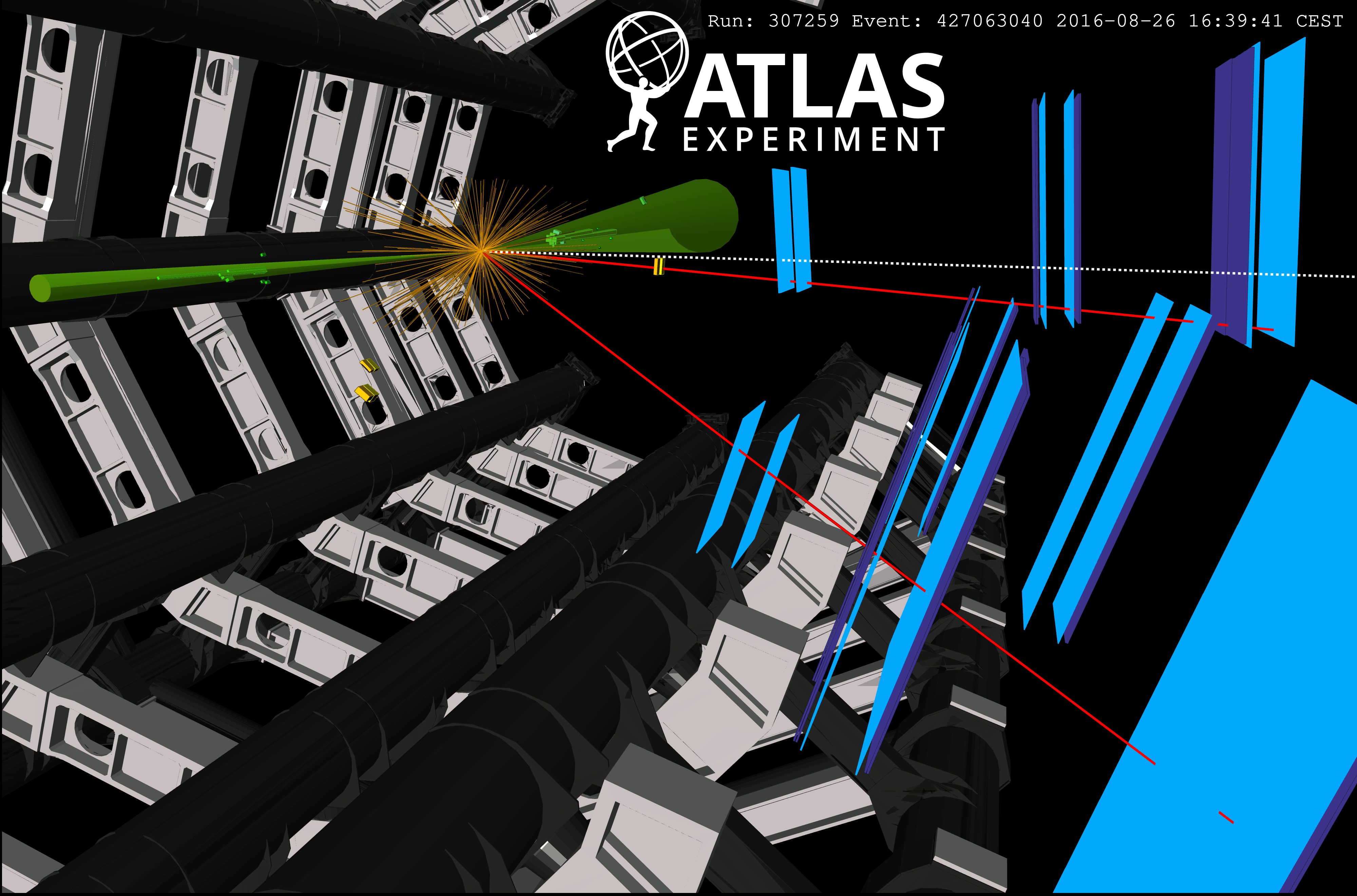Charming results that have got everybody thinking…
18 November 2011 | By

I’m writing from the annual Hadron Collider Physics Symposium, which began on Monday in Paris, France. It’s organised jointly by LPNHE and the University of Paris VI & VII, with an excellent location right in the heart of the Latin Quarter. HCP is a fun conference with only plenary talks, which means that I’ve had the chance to attend talks on a wide range of subjects including many quite remote from my usual areas of expertise.
The biggest surprise so far came not from ATLAS, but from LHCb. On Monday they showed a preliminary measurement of direct CP violation in the charm sector. That may sound rather impenetrable to the uninitiated, so let me elaborate: What they measured is the difference in the asymmetry between decays of D mesons (containing charm quarks) to kaons (containing strange quarks) to pions (containing only up/down quarks). By asymmetry here, we mean that the probability for a D0 to decay to kaons is not the same as the probability for a D0 to decay to pions. Then the final measurement is made by calculating the difference in each of these asymmetries between D0 mesons and anti-D0 mesons. They measure this compound quantity because a number of effects cancel to reduce the final uncertainty. The measured value of the CP violating asymmetry, ACP, is -0.82 percent, with a statistical uncertainty of +-0.21 percent and a systematic uncertainty of +-0.11 percent . Put simply, this means that the observed asymmetry is non-zero, with a significance of 3.5 sigma or a probability greater than 99.7 percent. This level of certainty is what particle physicists typically refer to as evidence.
Certainly measuring such CP violation in the first place is exciting, but what really matters is whether the value is consistent with what we expect from the Standard Model. Currently, most Standard Model expectations of ACP are at the order of say 10-4 or 10-3. However theoretical calculations of charm production have historically been notoriously difficult, which means we’ll need to wait for some input from our theoretical colleagues to better interpret the result. Nonetheless, LHCb (or should we now say LHCc?) have produced a very interesting result and they still have twice as much data on tape, so an improved measurement can be expected soon.
Of course, what all theorists at the conference are waiting to hear is the announcement of the discovery of the Higgs boson. There haven’t actually been very many new results from either ATLAS or CMS (the collaborations are very busy analysing the new data ahead of the winter conference season!), however ATLAS added two new channels which are sensitive to a high mass Higgs boson. These are extensions to the so-called golden 4-lepton channel which searches for decays of the Higgs to a pair of Z bosons, with each Z decaying to a pair of leptons. In these two new channels, one of the Zs decays to leptons, while the other Z either decays to a pair of neutrinos or a pair of quarks. Neither channel is as ‘clean’ (free from background noise) as the golden channel, however the ZZ -> llvv channel excludes the Higgs at the 95 percent confidence level in the mass range of 300-470 GeV and the ZZ -> llqq channel obtains a result very close to the Standard Model, so adding these measurements improves the combined ATLAS limit. Certainly in terms of the Higgs, the most eagerly awaited talk will be coming just after lunch today (Friday), when a speaker will put the information from ATLAS and CMS together and summarise the current status…




